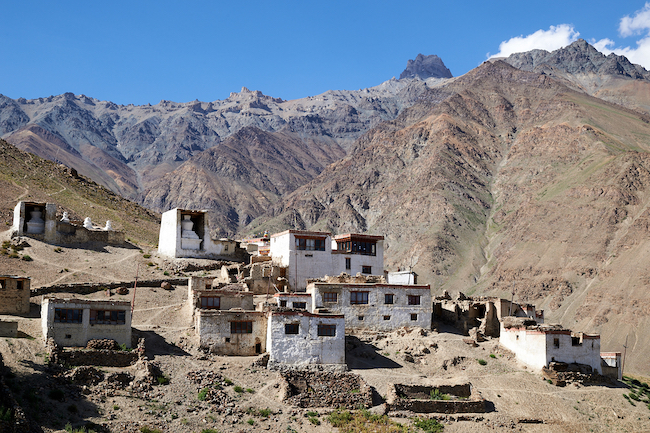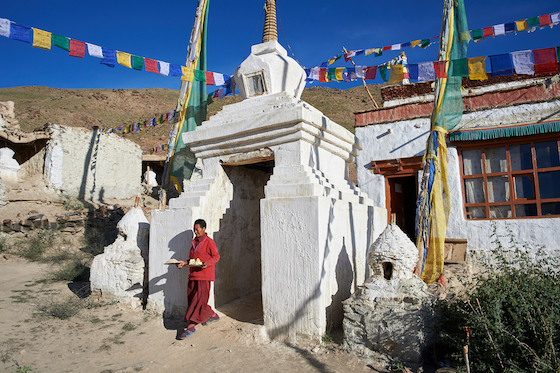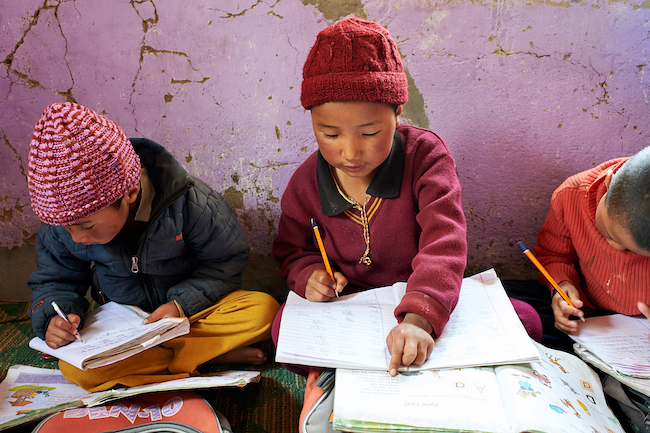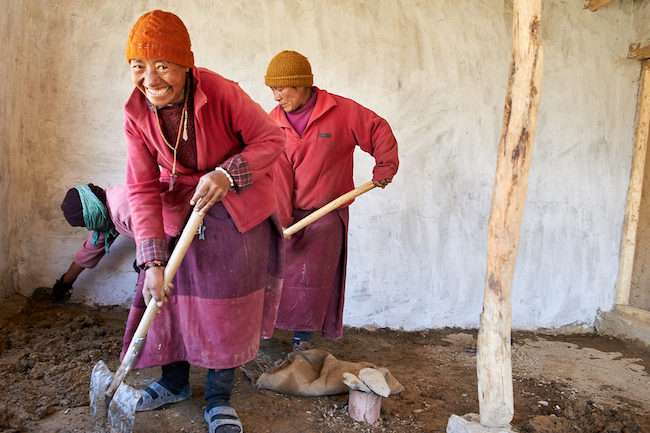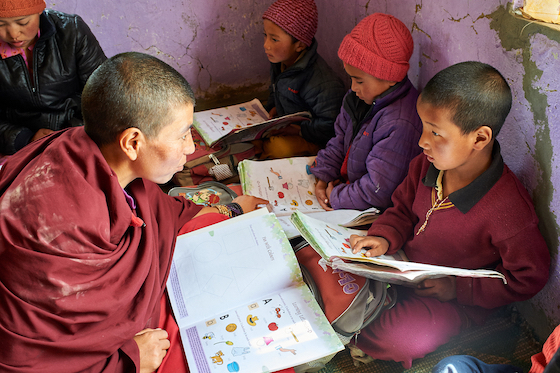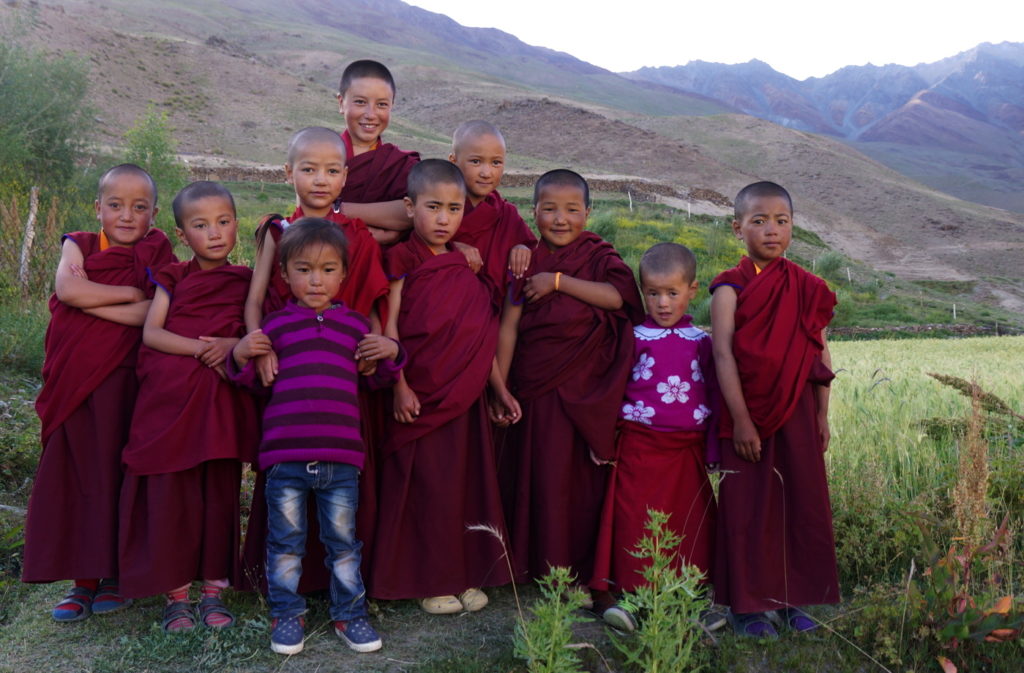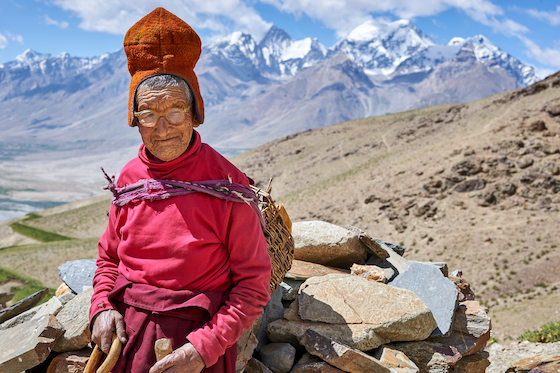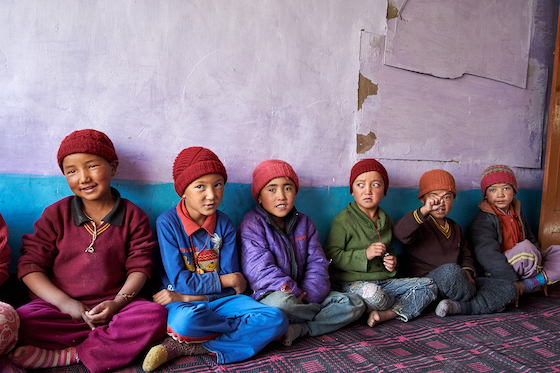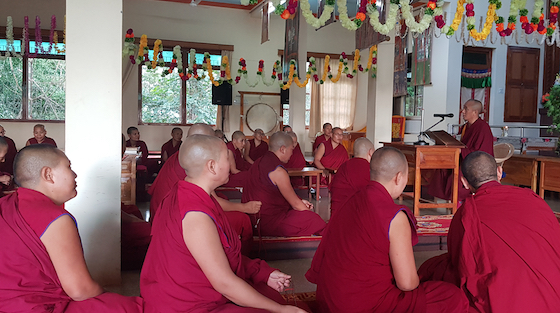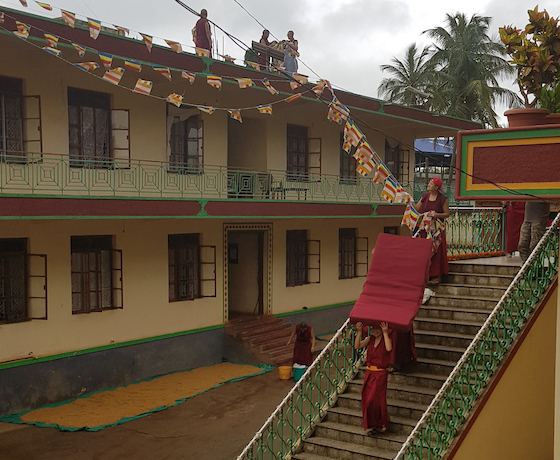It takes a lot of work to maintain the nunneries that we support. In 2019, a long list of maintenance and repair projects were completed at Dolma Ling Nunnery and Institute.
On behalf of the over 240 nuns at Dolma Ling, thank you to everyone who gives to the Maintenance Fund.

Suresh, the longtime carpenter at Dolma Ling, hard at work fixing damaged windows.
On seeing the list of completed projects, one supporter wrote:
“From a homeowner’s perspective, for the small cost, so much was accomplished. The volume of the work impresses me and for such a small annual investment. It is work focused on sustainability, environmental effects and impact, and living harmoniously with the Earth. Yay!”
We hope this report conveys the enormous impact of your gifts to keep Dolma Ling a strong and healthy place for the nuns to live and study.
Here’s a list of 36 Dolma Ling maintenance projects that were completed in 2019 thanks to your generosity.
Carpentry Work
Suresh, the longtime carpenter at Dolma Ling, completed the following projects in 2019:
- Fixed leaks in the slate roof before the monsoon rains began.
- Repaired various damaged windows.
- Put up protective splash covers on the outside doors of His Holiness’ suite on the top floor of the temple building.
- Made 6 bulletin boards for the housing blocks so that the nuns do not have to tape notices on the walls, spoiling the paintwork.
- Cleaned the café gutters and checked the café roof.

before and after leak repair Dolma Ling 2019
Roofing, Repair, and Maintenance Work
- Extensive repairs were made to the multiple bathroom blocks at Dolma Ling, including to the floors, pipes, and to the windows and doors which were damaged by water. The toilet and bathroom areas were, in some cases, 20 years old because the nunnery was built in stages. Many of the water pipes were corroded and needed replacing. Urgent action was needed to prevent further degeneration of the building structure.
- Filled holes and gaps in the stone and slate paving throughout the nunnery complex.
- Cemented the area in front of the septic tank to help with drainage.
- Repaired the slate flooring in the nuns’ bathhouse and the stairs of the teachers’ housing block.
- Cleared and filled holes in gardens and courtyards and improved drainage.
- To prevent dampness in the nunnery guesthouse and to facilitate drainage, workers dug a two-foot ventilation gap between the back wall of the building and the land behind it. This was money well spent as the condition of the ground floor of the building is very much improved. The building is to be painted this winter.
- Created steps and filled in the guesthouse garden.
- Built a clothes-washing area for the nuns by installing half-round concrete pipes into the water channel. This was carried out efficiently and with the least disruption to the nuns’ washing area.
- A tree was removed which was dripping water onto the windowsill of a nun’s room making it constantly damp inside.
- Painted the doors of the tofu-making building.
- Replaced the valves in the pump house.
- Tested the water from the bore well and the water filtration system. The water was found to be clear of coliforms and heavy metals but has a large amount of iron and some turbidity which will need to be filtered out.
- Built an overhead water tank stand. This is part of a larger project to pipe water from the bore well in the front garden to an overhead tank from which it will be filtered and fed to the kitchen, dining hall, and to the shed where there is a water boiler which the nuns use to fill their thermos flasks for their rooms.
- Started work on the repair and cleaning of the solar panels. The nuns need to remove all deposits that have collected inside the solar collectors, replace leaky valves, and check and clean all the panels and piping regularly to keep the system running. The bulk of the work has been done on all three solar units but has revealed some problems that will need to be fixed in 2020.
- Painted large sections of the nunnery including three of the six housing wings, the dining hall, and the courtyard external faces of the corridors, dining building, and the temple.
- Hung curtains in the prayer hall. There have been recent cases of thefts in temples because thieves get tempted by seeing images and ritual items through the clear windows of the hall.
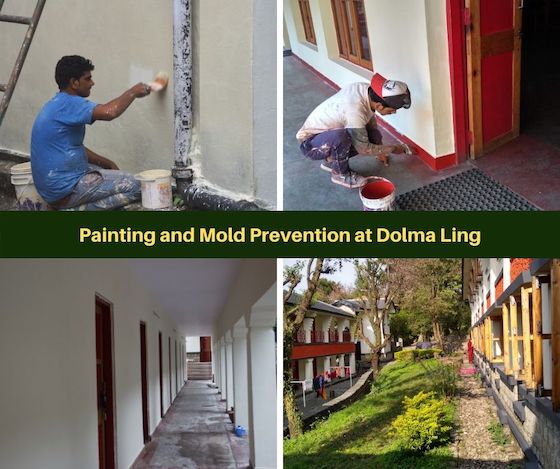
Regular re-painting of the Nunnery buildings is essential. Since the construction of the first wings at Dolma Ling, over 20 years ago, we have made efforts to re-paint the buildings in rotation every three years. However, the last time the first three nunnery wings were painted was in 2015 so a good deal of repair work was also overdue, especially in the bathrooms.
Blacksmith Work
- Three ventilating skylights were added to the bathhouse to prevent the build-up of humidity within the building. These have been very simply made and installed and are very effective.
- The blacksmith who put the guttering on the retreat huts also installed guttering and downpipes to stop water damage down the sides of the building.
- Put up fencing and a gate on the ground floor of the senior teachers’ house to prevent staff children from falling.
- At the nuns’ request, four small gates were added to the entrances of the staff and teachers’ residences and an office, to prevent stray dogs from taking refuge inside the buildings.

Protecting the Retreat Huts from Monsoon Rains
The eight retreat huts built and inaugurated in 2014 are now occupied by nuns in retreat and by the newly qualified Geshemas.
During the summer of 2017, the nuns noticed that water was flooding through the land during heavy monsoon downpours and causing problems inside the huts and to the access paths, as well as water logging parts of the gardens.
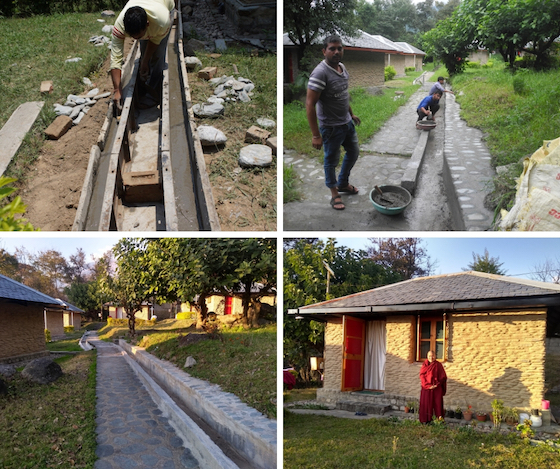
The eight retreat huts, completed several years ago thanks to generous donors, are occupied by nuns in retreat and by the newly qualified Geshemas. Drainage work was needed to prevent flooding during the monsoon.
The following work to fix the retreat huts was done between June and October 2019:
- Drains were dug and lined to ensure that water flows efficiently into the main drain behind the huts.
- The guttering was installed on all 8 huts so that the water from the roofs does not splash back against the walls.
- Each hut has two downpipes on opposite corners of the building, which takes water efficiently into the drain.
- The drainage system has been made to accommodate the water from the downpipes.
We are confident that these arrangements will be effective in channeling the monsoon rainwater away from the buildings. This will reduce dampness and make the retreat huts more comfortable and healthier for the occupants.

To prevent dampness in the guesthouse and to facilitate drainage, workers dug a two-foot ventilation gap between the back wall of the building and the land behind it. This was money well spent as the condition of the ground floor of the building is very much improved. The building will be painted this winter and will have a new lease on life.
Masonry Work
A mason named Bablu and his assistants were hired to carry out the general repair work required including:
- Filled holes in the paving.
- Re-set the levels on the septic tank in front of the café to enable water to drain better.
- Repaired the slate flooring on the teachers’ house stairs and in the bathhouse.
- Built a low stone wall in the garden between the office and the teachers’ house to improve the possibility of creating a nice garden for the rose trees which are planted in that area.
- Created a drain at the bottom of the kitchen stairs to help remove excess water that collects there.
- Tiled the torma room floor. The nuns decided to make new surfaces on which they make tormas out of black granite and also requested that the floor be tiled so that it could be kept as clean as possible, befitting the room in which these special ritual offering cakes are made.
- Tiled the wall in the dining room behind the serving table. The wall was badly marked and is much easier to keep clean now that it is tiled.
Work to be Done in 2020
Dolma Ling is a bit like a university campus, with many buildings, housing blocks, and systems. In the harsh climate and heavy monsoons of northern India, there is always work to be done to keep the nunnery complex strong, safe, and healthy.
For this reason, the Tibetan Nuns Project fundraises each year for the Maintenance Fund.
Here are just a few of the projects to be done in 2020:
- Fix the café roof with bituminized surfacing.
- Stop the dripping from the overhead pipes in the debate courtyard.
- Paint the guesthouse, the clinic, and the lower teachers’ house, all of which are urgently in need of doing as they have not been painted since 2015.

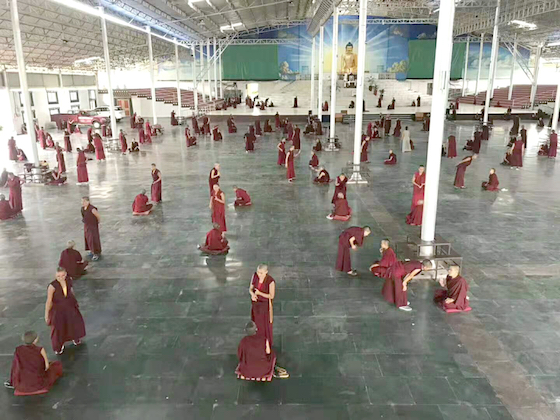

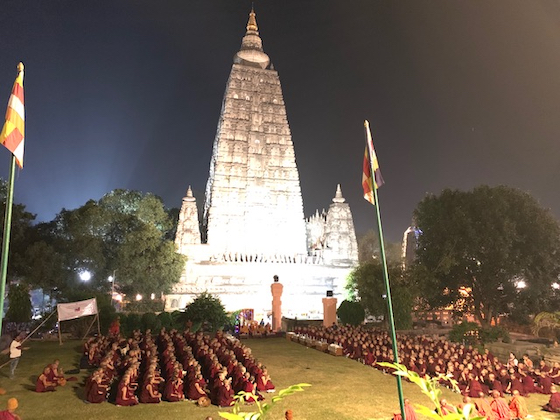
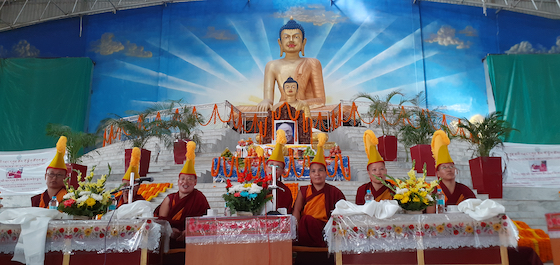
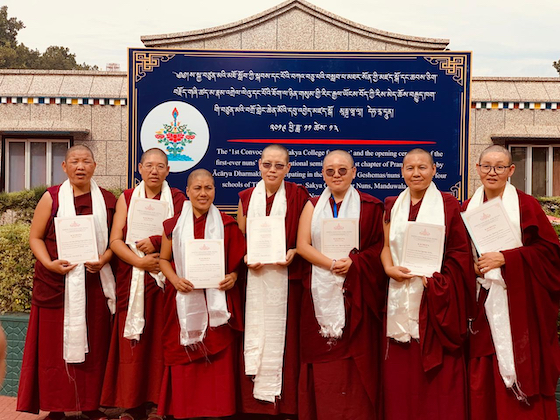
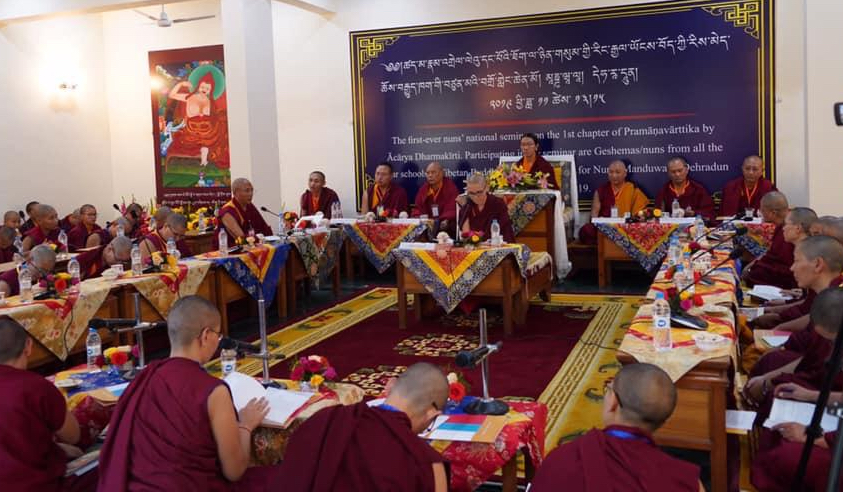
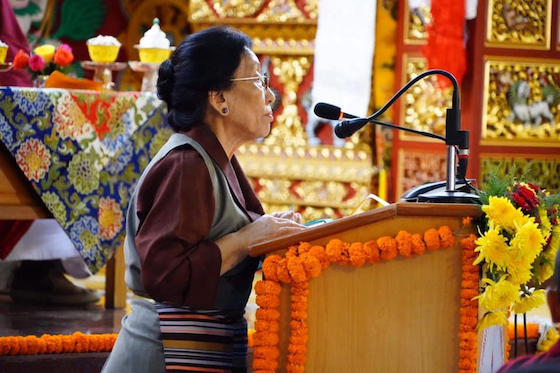
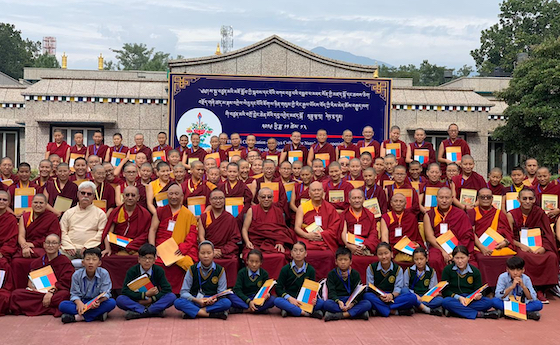
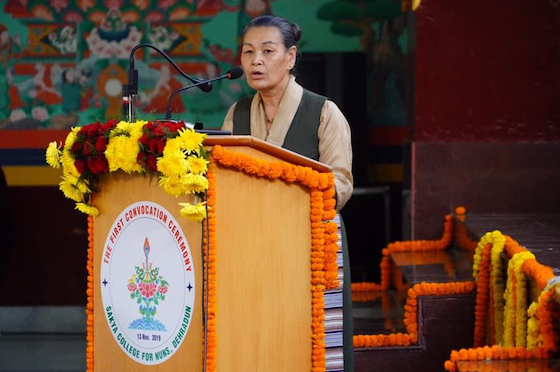


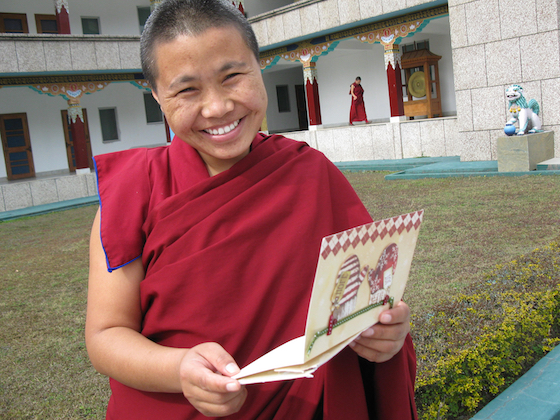
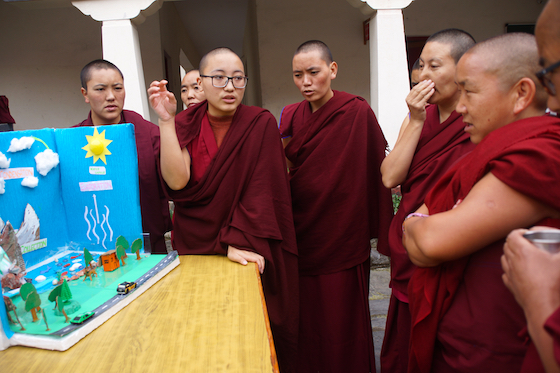
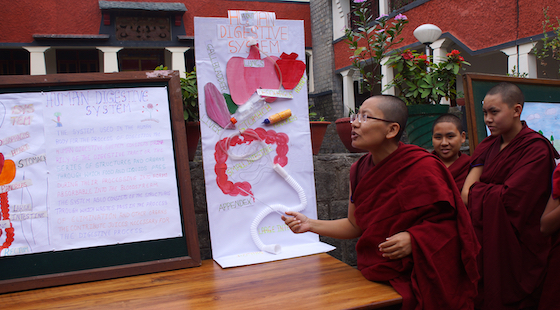
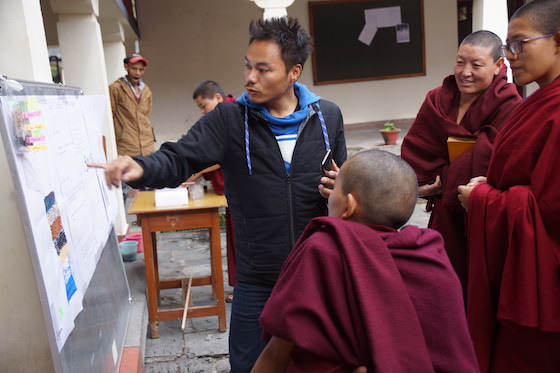

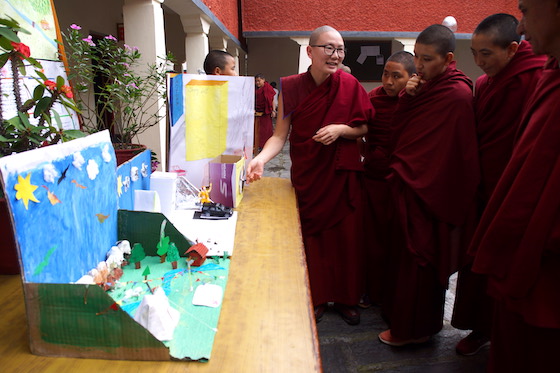
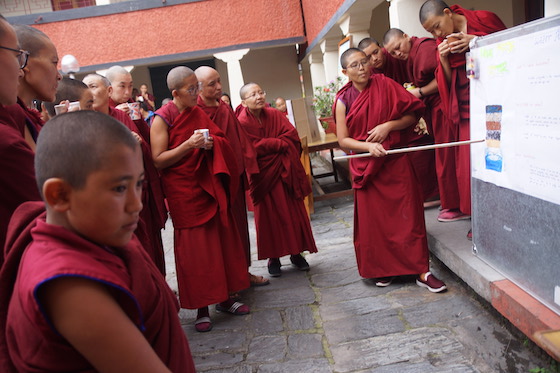
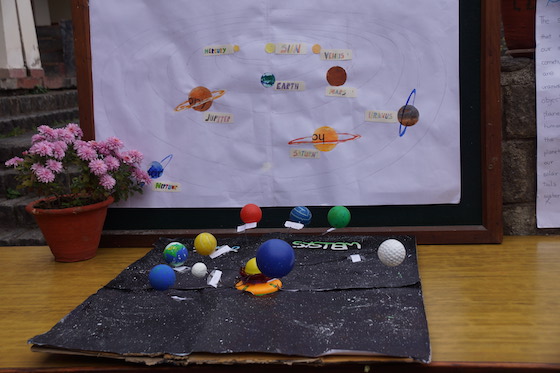
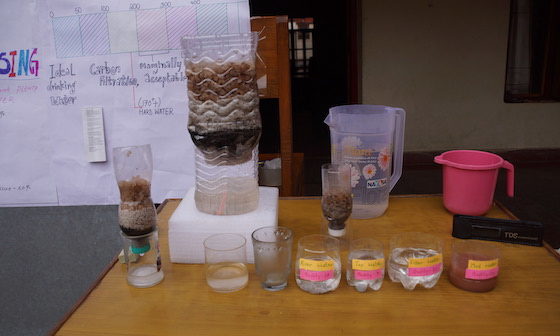
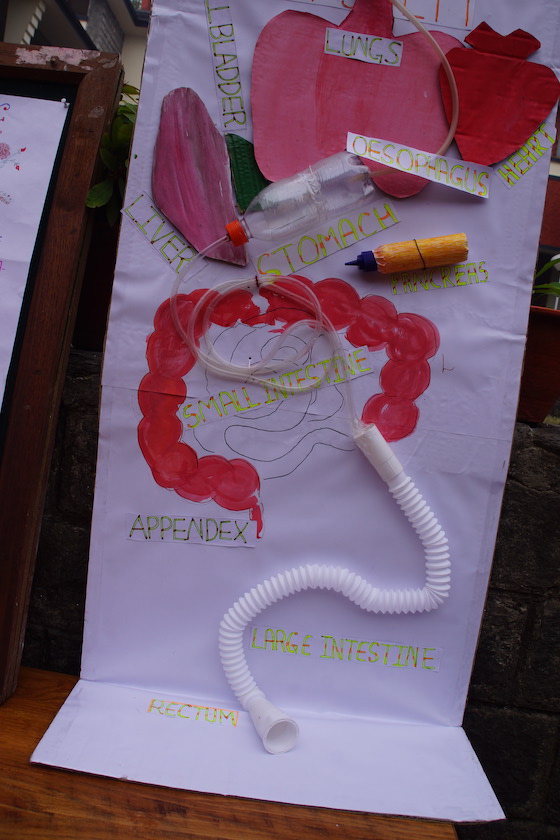
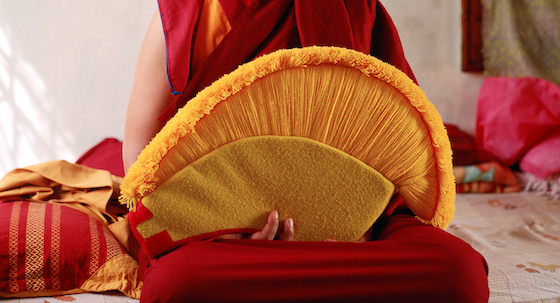
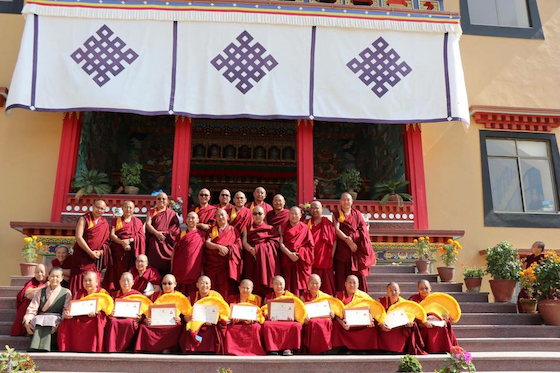
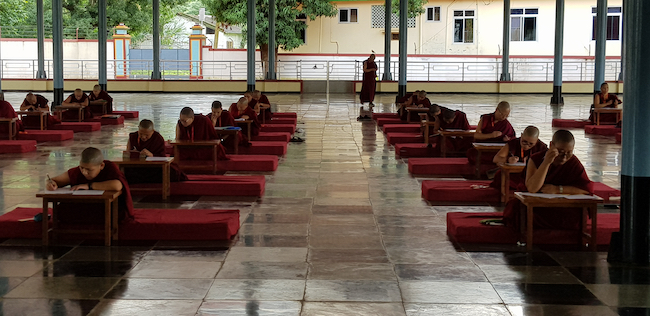
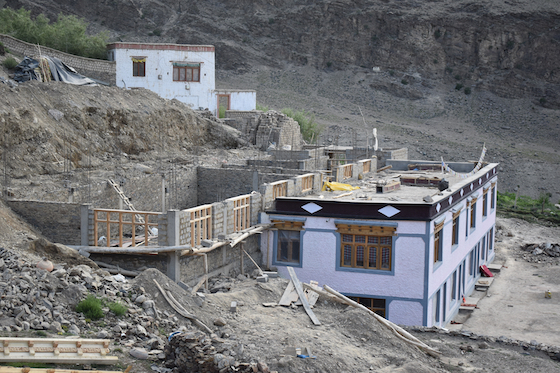
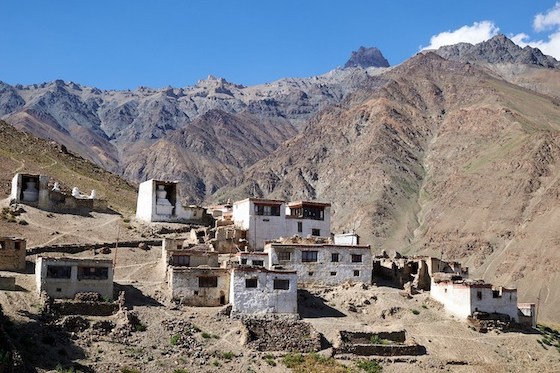
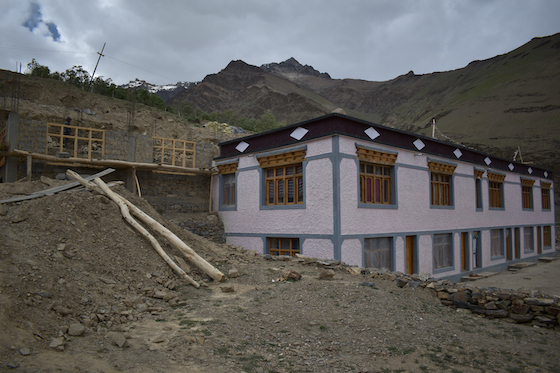
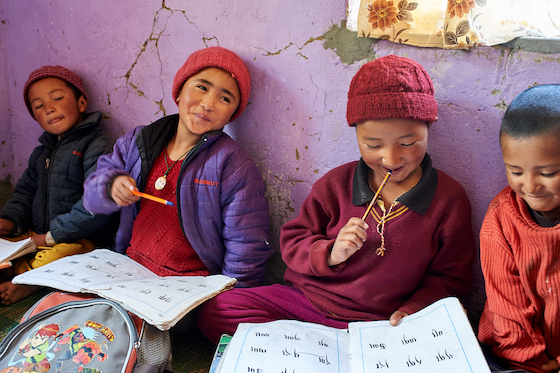


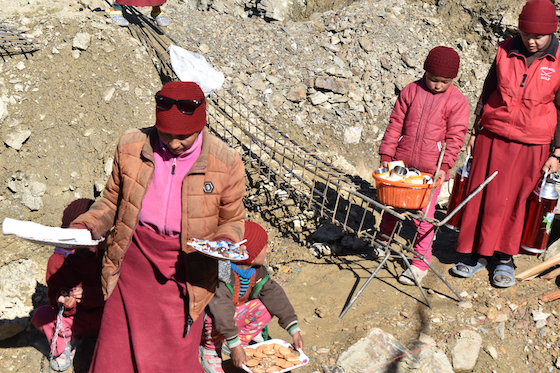
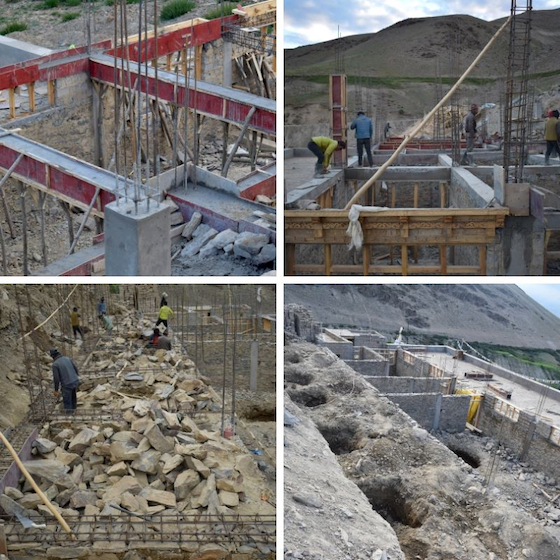
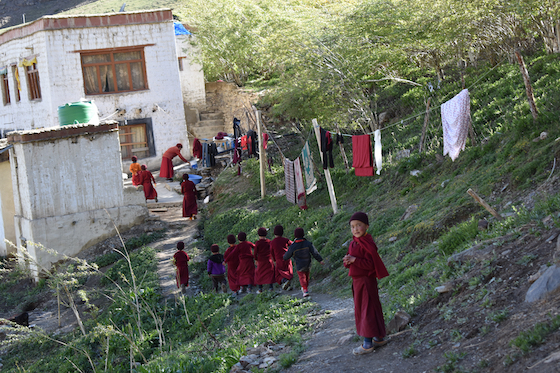
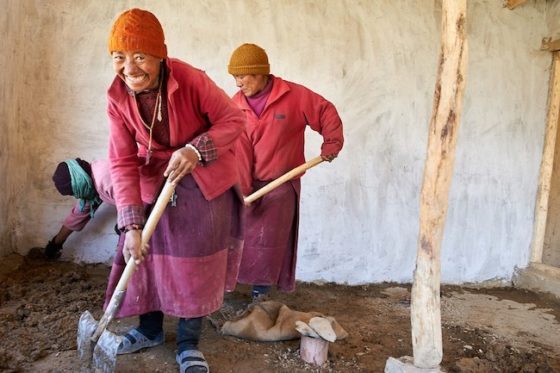
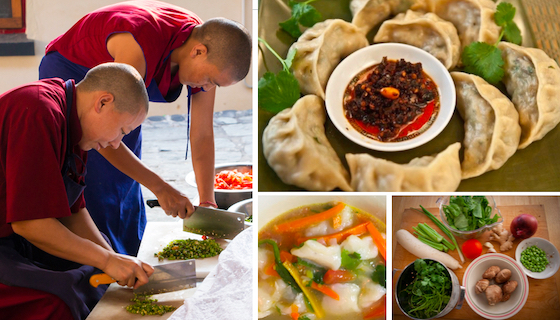
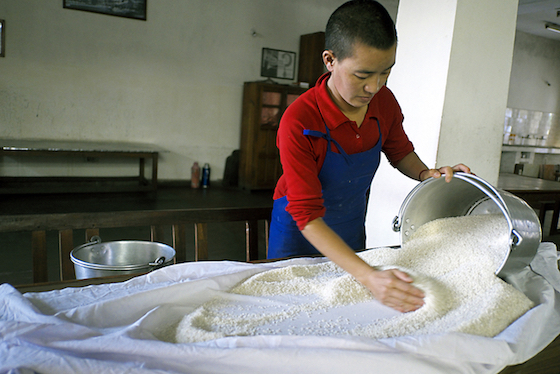
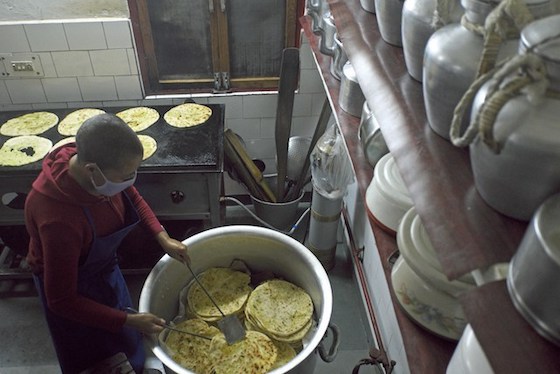
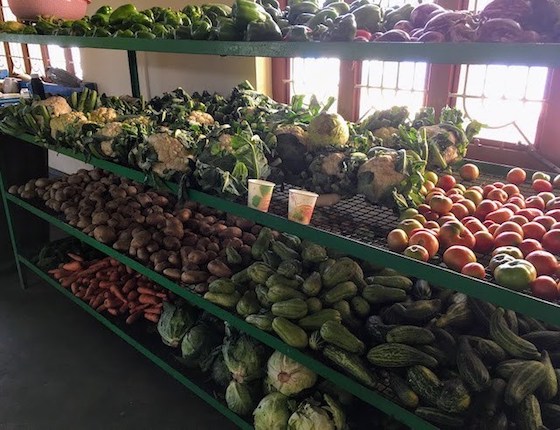
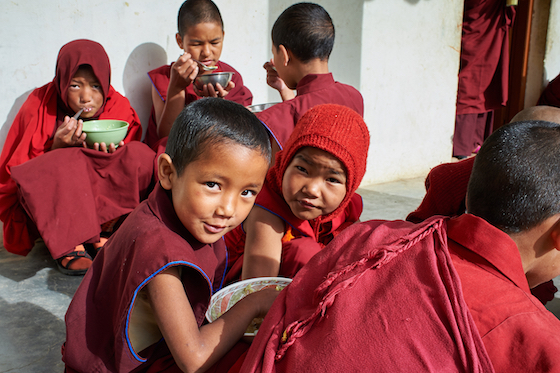
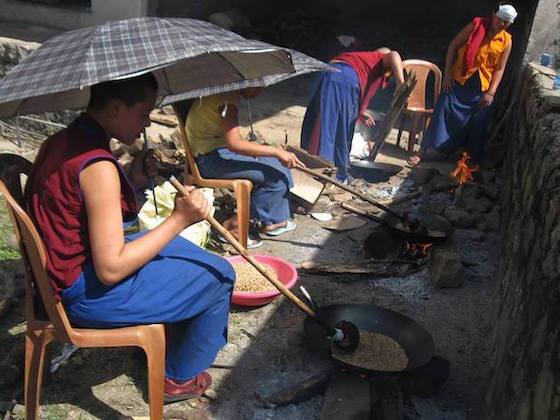
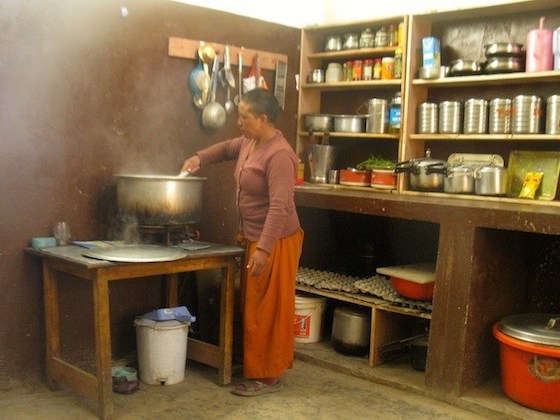
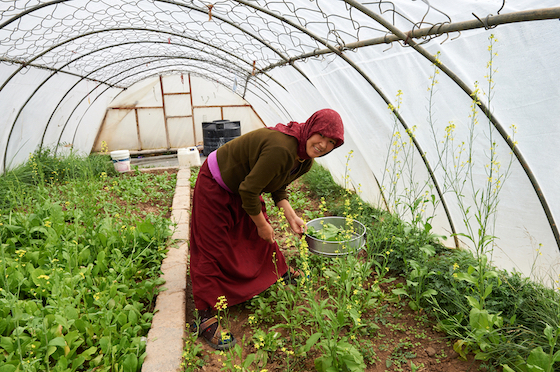
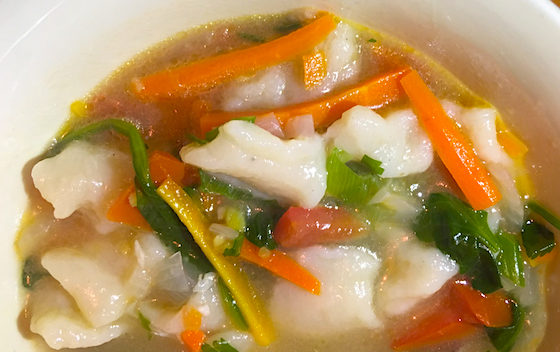

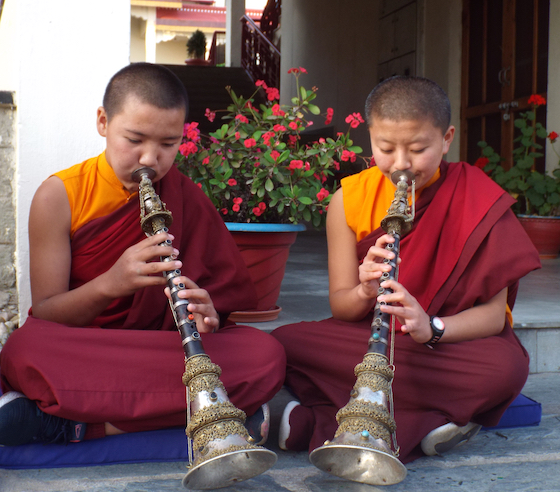

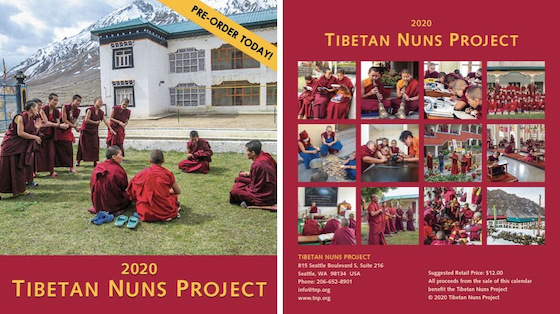 A Unique Charity Calendar
A Unique Charity Calendar